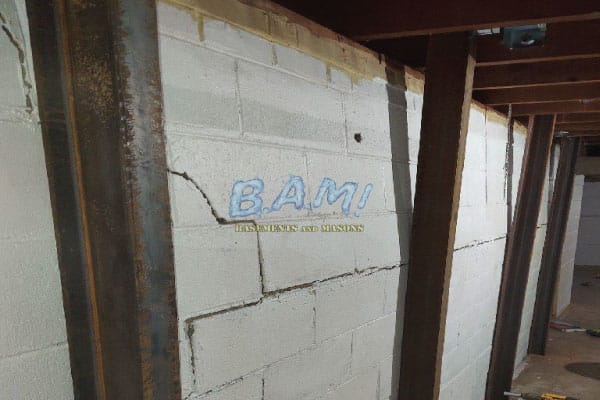Best Basement Waterproofing Fundamentals Explained
Best Basement Waterproofing Fundamentals Explained
Blog Article
Top Guidelines Of Best Basement Waterproofing
Table of ContentsHow Best Basement Waterproofing can Save You Time, Stress, and Money.Getting My Best Basement Waterproofing To WorkSome Ideas on Best Basement Waterproofing You Need To KnowBest Basement Waterproofing - TruthsRumored Buzz on Best Basement Waterproofing
uses excavation strategies towards the bottom of the structure's foundation. includes eliminating moisture after it has actually gotten in the cellar. AdvantaClean's experienced professionals and professionals will situate the water resource. If wall or slab splits exist, we will certainly infuse polyurethane and epoxies into the cracks and seal the compromise, avoiding additional wetness from going into.Setting up basement ventilation systems, conditioning systems, or cellar dehumidifier systems to obtain water out of your cellar. Choosing AdvantaClean's basement waterproofing solutions is an efficient way to deal with moisture and avoid mold from jeopardizing the framework of your home and the health of your family members.
If there's condensation on the exterior of the aluminum foil, you have high humidity in your cellar. If the aluminum foil has condensation on the within surface (next to the wall), the soil around your house might be naturally damp from a high water table or poor dirt water drainage.
You can waterproof just your interior walls, which may solve the problem. Once they dry out, they stick permanently to concrete and masonry wall surfaces.
All about Best Basement Waterproofing
Concrete water resistant coverings can not be applied to formerly repainted surfaces; examine the tag. Known as densifiers, they are ideal only for wall surfaces that have not been repainted or sealed.
But you brush, roll, or spray it on a lot more thickly one gallon covers simply 75 square feet, not the 300 square feet typical with typical paint. Waterproof paint is fine for do it yourself application. You can use it over repainted surfaces, and paint over it once it's cured (one gallon costs $37).
It can cost $10,000 to $15,000, relying on the work needed. Exterior waterproofing involves digging deep into all over your home to the complete deepness of the foundation walls, after that setting up a water-proof finish or membrane layer topped by water drainage panels. The panels offer a simple course for water to move to an exterior French drainpipe at the end of your structure.
About Best Basement Waterproofing
A cellar without waterproofing is kind of like that. Your basement doesn't want to go via a downpour without proper security simply as much as you do not desire to.
Outside waterproofing is a waterproofing technique that entails sealing your home from the exterior. The foundation walls are this link then cleaned up, sealed, and covered with a water-proof membrane or sealer.

Top Guidelines Of Best Basement Waterproofing
It's a more involved process that calls for excavating up your backyard, which is pricey and lengthy. Exterior waterproofing includes removing everything bordering your house, including verandas, driveways, pathways, landscaping, AC devices, decks, and so forth. If any of the work was done incorrectly and water is still entering your basement, linked here there isn't much you can do to remedy or repair it.
Interior basement waterproofing includes waterproofing from the within. Any kind of water that leaks right into your basement is rerouted prior to it touches your floor. It's sort of like wearing a raincoat under your garments. It involves two points: a water drainage track and a sump pump. It works by sealing the within of your basement wall surfaces and floorings so water that attempts to enter is funnelled out through a sump pump.
It's a reliable approach to water-proof your cellar. The downside of interior basement waterproofing mostly has to do with the setup process.
Some Known Details About Best Basement Waterproofing
To conclude, outside and indoor cellar waterproofing are both effective methods of protecting your home from water damage. Exterior waterproofing develops an obstacle that protects against water from entering your home, while indoor waterproofing redirects water that does enter your home. And it is very important to note that exterior waterproofing is a pricey and disruptive installment procedure when compared to indoor waterproofing.
Whichever approach you pick, make certain you pick a trustworthy and reliable professional for the work. Both approaches require knowledgeable employees to handle the task. If you have any kind of concerns concerning basement waterproofing, please connect to us. And if you remain in our solution area and have water in your cellar, contact us for a free, no-obligation home evaluation.
You can complete our kind here. Best Basement Waterproofing, begin a conversation in the bottom right-hand corner, or call us at 1-800-827-0702
Report this page